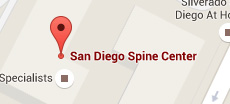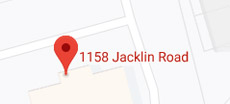Surgical Treatments
Spinal Deformity Surgery
The Spine or backbone provides stability to the upper part of our body. It helps to hold the body upright. It consists of several irregularly shaped bones, called vertebrae appearing in a straight line. The spine has two gentle curves, when looked from the side and appears to be straight when viewed from the front. When these curves are exaggerated, pronounced problems can occur such as back pain, breathing difficulties and fatigue and the condition will be considered as deformity. Spine deformity can be defined as abnormality in the shape, curvature and flexibility of spine.
For more information about Spinal Deformity Surgery, click on below tabs.
Spinal Fusion
Spinal fusion is the surgical technique of combining two or more vertebrae. Fusion of the vertebrae involves insertion of secondary bone tissue obtained either through auto graft (tissues from the same patient) or allograft (tissues from the other person) to augment the bone healing process.
For more information about Spinal Fusion, click on below tab.
Total Disc Replacement Surgery
Total disc replacement is a surgical procedure in which the diseased or damaged intervertebral discs of the spinal column are replaced with an artificial disc to restore the normal function and movement of the spine. The discs in your spine are soft cushions that sit between each vertebra, the bones that make up the spinal column.
For more information about Total Disc Replacement Surgery, click on below tabs.
Spinal Decompression
Spinal decompression is a surgical procedure done to relieve pain and associated symptoms caused by pressure or compression on the spinal cord and/or nerves.
For more information about Spinal Decompression, click on below tab.
Scoliosis Treatment
Scoliosis is the abnormal curvature of spine giving the spine an “S” or “C” shape. Scoliosis can occur at any age and is more common in girls than boys. It. Larger curves cause discomfort while the smaller curves do not cause any problems. In most cases, the exact cause remains unknown.
For more information about Scoliosis Treatment, click on below tab.
Lumbar Fusions
Spinal fusion, also called arthrodesis, is a surgical technique used to join two or more vertebrae (bones) within the spine. Lumbar fusion technique is the procedure of fusing the vertebrae in lumbar portion of the spine (lower back).
For more information about Lumbar fusions, click on below tab.
Lumbar Artificial Disc Replacements
Lumbar artificial disc replacement is a surgical method of replacing the diseased or damaged intervertebral discs of the spinal column with an artificial disc to restore motion to the spine. It can be considered as an alternative to spinal fusion for patients with low back pain.
For more information about Lumbar artificial disc replacements, click on below tab.
Posterior Lumbar Fusions
Spinal fusion, also called arthrodesis, is a surgical technique used to join two or more vertebrae (bones) within the spine. Lumbar fusion technique is the procedure of fusing the vertebrae in lumbar portion of the spine (lower back).
For more information about Posterior lumbar Fusions, click on below tab.
Posterolateral Lumbar Fusion
Posterolateral lumbar fusion is a surgical technique that involves correction of spinal problems from the back of the spine by placing bone graft between segments in the back and leaving the disc space intact.
For more information about Posterolateral lumbar fusion, click on below tab.
Spondylolisthesis Reduction & Fusion
Spondylolisthesis is a condition characterized by displacement of one vertebra over the other. Excessive displacement may compress the surrounding spinal nerves and cause pain.
For more information about Spondylolisthesis Reduction & Fusion, click on below tab.
Transforaminal Lumbar Interbody Fusion (TLIF)
Transforaminal lumbar interbody fusion (TLIF) is a type of spinal fusion procedure in which bone graft is placed between the affected vertebrae in the low back (lumbar) region through an incision on the patient’s back.
For more information about Transforaminal lumbar interbody fusion (TLIF), click on below tabs.
Lumbar Micro Discectomy
Micro discectomy is a surgical procedure employed to relieve the pressure over the spinal cord and/or nerve roots, caused by a ruptured (herniated) intervertebral disc. A herniated disc, common in the lower back (lumbar spine) occurs when the inner gelatinous substance of the disc escapes through a tear in the outer, fibrous ring (annulus fibrosis).
For more information about Lumbar Micro discectomy, click on below tab.
Lumbar Laminectomy
Lumbar laminectomy, also known as decompression laminectomy, is a spinal surgery done to relieve excess pressure on the spinal nerve(s) in the lumbar (low back) region.
For more information about Lumbar laminectomy, click on below tab.
Cervical Disc Replacement
Cervical disc replacement is a surgical procedure of replacing the diseased or damaged intervertebral discs in the neck region with an artificial disc to restore the motion of spine. It is considered as an alternative to anterior cervical discectomy and fusion.
For more information about Cervical Disc Replacement, click on below tabs.
Anterior Cervical Discectomy
Anterior cervical discectomy is an operative procedure to relieve pressure or compression on the nerve roots and/or the spinal cord because of a herniated disc (damaged disc) or a bone spur.
For more information about Anterior Cervical Discectomy, click on below tabs.
Cervical Laminectomy
A cervical laminectomy is an operative procedure of removing the bone at the neck (cervical spine) region to relieve pressure on the spinal nerves. It can also be performed to relieve the symptoms of narrowed spinal canal known as spinal stenosis.
For more information about Cervical Laminectomy, click on below tab.







